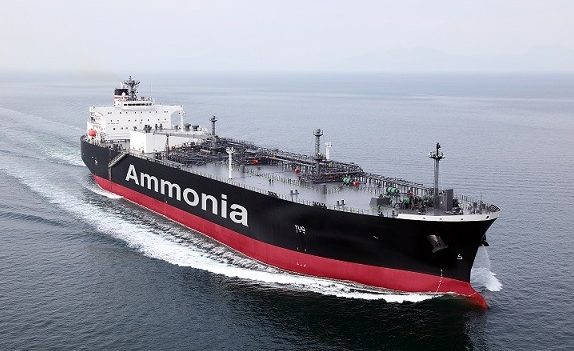Japan promotes ammonia-fuelled shipping

Japan Inc, hitherto one of the greatest proponents of a hydrogen-powered society, has opened the door to far greater use of ammonia.
The Japanese government said today it will introduce ammonia into the fuel mix for thermal power generation as well as for shipping from the late 2020s as part of its efforts to achieve carbon neutrality in 2050.
“Ammonia is expected to increase its importance because it does not emit CO2 when it is burned,” Ryo Minami, director-general of oil, gas and mineral resources at the Ministry of Economy, Trade and Industry, told the second fuel ammonia council meeting.
“Ammonia is expected to be introduced as fuels on a commercial basis for thermal power generation and shipping in the late 2020s, and it is expected to be used for a significant amount by around 2030,” Minami said.
Japan will start test burning 20% of ammonia at a coal-fired power plant in central Japan next year as part of a feasibility study run by state-owned New Energy and the Industrial Technology Development Organization.
In August this year, Splash reported Nippon Yusen Kaisha (NYK) was teaming with compatriot yard Japan Marine United and local class society Nippon Kaiji Kyokai (ClassNK) to try and commercialise the use of an ammonia-fuelled ammonia gas carrier as well as an ammonia floating storage and regasification barge.
Japan and neighbour South Korea, who import nearly all their primary energy needs from the Middle East, have released national hydrogen strategies of late. Both nations have repeatedly stressed the significance of hydrogen in addressing energy security concerns. Ammonia is made up of three parts hydrogen to one part nitrogen.
In related news, shipping major Kawasaki Kisen Kaisha (K Line) has joined bluechips such as Toyota and Toshiba in signing up to the Japan Hydrogen Association (JH2A), a new organisation that promotes global collaboration and the formation of a hydrogen supply chain in the field. K Line is involved in a high profile first for shipping, the construction and operation of a liquefied hydrogen carrier, which aims to take the fuel from Australia to Japan.
In aviation, Airbus, the world’s largest airplane manufacturer, has given itself five years to develop a commercially viable hydrogen aircraft.

Reaction Engines completed a joint proof of concept study a few months ago into using ammonia as jet fuel for aviation. Steamology which won a £350,000 Innovate UK grant into R&D for hydrogen burning gas turbines for trains which could be first used for the hydrogen version of the Vivarail Class 230, thinks it could also be used to power ships.